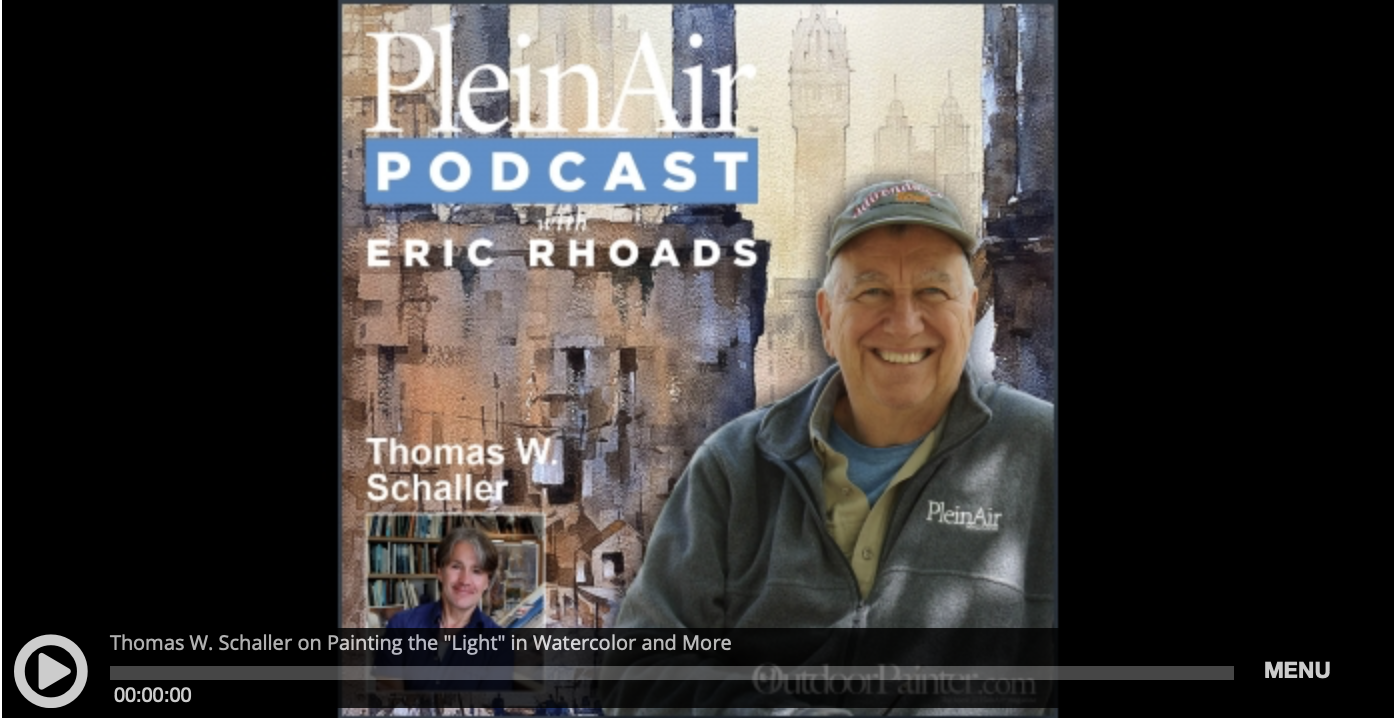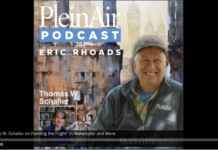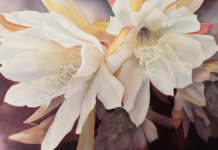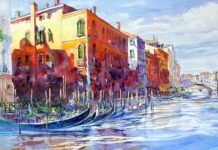Excerpted portions of Thomas Schaller’s interview with art publisher Eric Rhoads.
“When I originally started drawing as a kid, I was very solitary,” says Thomas Schaller. “My my father was very anti-art, and I think there was some sort of strange, subversive element to drawing as a way of avoiding him. It was a very private thing, so I hid my drawings away. And that became sort of a lifestyle. It’s not really his fault; it’s just the way it was. And I became very used to drawing and painting as a private endeavor. I didn’t share it. I didn’t talk about it.
“Obviously, my life over the last 10 years or so has been very different, very public. I teach a lot, and I’m always painting with others, talking about art — and I love it. So this period of time at home has given me an opportunity to re-engage with the original instinct I had to create art in the first place, but in a healthy way. For me, that’s meant thinking more about the storytelling aspect of my work — what it is I have to say as an artist, what my voice is. Spending quality studio time and and plein air painting on my own, I’ve been working out some compositional problems I thought I had and some other technical issues I wanted to work on — trying out new brushes, colors, and paper. When you live on an airplane, flying from one teaching gig to the next, it’s great in one way but we lose the time to just stop and take a breath and think about what it is you’re doing. So this time has given me the opportunity to do that.”
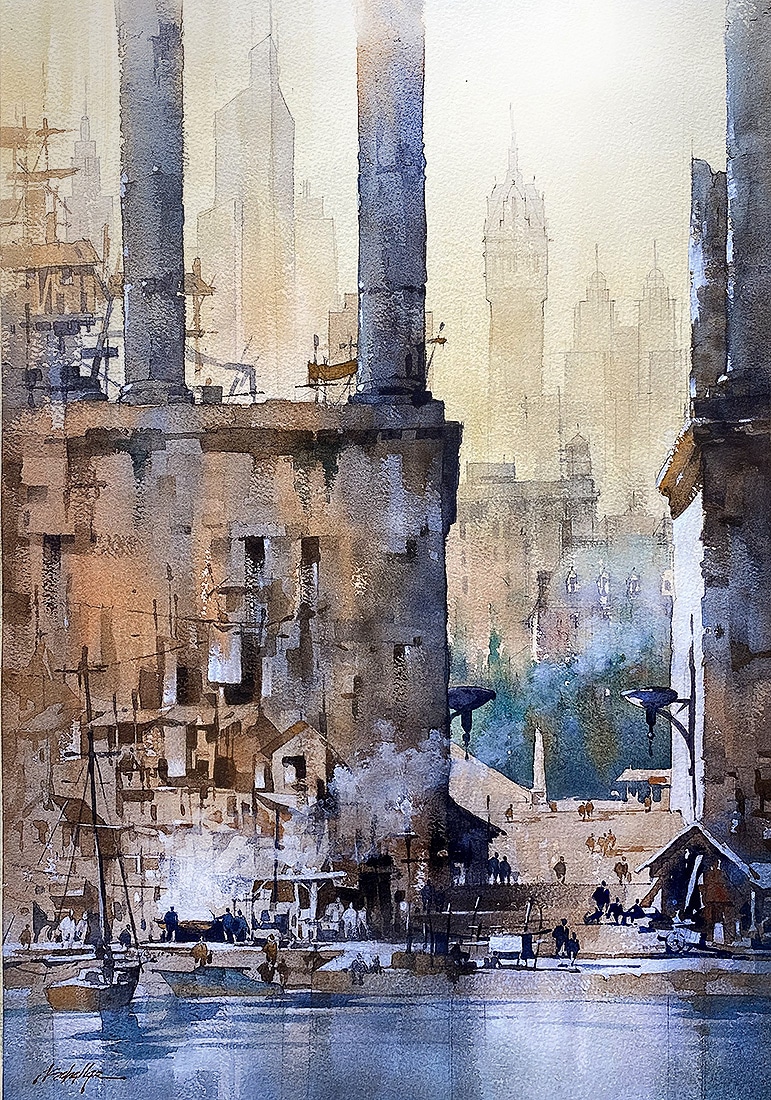
WATERCOLOR TECHNIQUE
“Painting with watercolor is a subtractive process. You start with 100 percent of light, and then you begin to carefully, or not so carefully, subtract away. People ask me a lot, how do you paint the light in watercolor? And the answer is, of course, you don’t. It’s already there. What you paint are the shades and the shadows that give white the identity of light, the luminosity that you want to have. Light can’t exist without dark. So you paint the darker areas to give light, light. Looking back in art school, sculpture was my first major.
“Because of my interest in the built environment and architecture, I somehow thought maybe that was the path for me, that I’d be a 3D artist and sculptor. And I was reading a book on the great sculptors like Bernini and Nikoleta. They talked a lot about taking a large, untouched block of stone or marble and subtracting away the the unnecessary parts to reveal the work. The amazing art within, that’s always stuck with me. In no way do I compare myself to those guys, I’m just saying, in a somewhat similar way, watercolor reminds me of that. You start with something you carve away. You carve away the light to reveal the painting that’s just waiting there to be found. And I just don’t get that same rush with acrylic or oil. I just think watercolor is something very, very different. It’s very special.”

DESIGN SKILLS
“Painting is always about design, whether you work in a very realistic manner or completely abstract. When I sit around with my painter friends, somehow or the other, the conversation always ends up with there. It’s the abstract collision of lights and darks, big and small shapes that make a painting good or bad, effective or ineffective. It’s always on my mind. I don’t think there’s any right way to do it. I just try not to repeat myself. I try to always find new ways of arranging those shapes on a piece of paper. My method, and it’s not a lesson, t’s just an anecdote, so if it works for anybody, please feel free to steal it: I sit and doodle constantly. I make abstract shapes of dark, light and mid-tone. I even dream about shapes of light and dark. I’ll wake up in the middle of the night and I’ll just sketch them in a sketchbook by my bed. And it’s amazing how many of these informal abstract scribbles end up becoming paintings.
“With design, the artist has the ability to orchestrate the viewers experience. And the only way to do that is to pull them inside your painting and gently suggest a way that they can move around it to have an experience that you might want them to have, or maybe one that you you never planned. But it’s really all about the design of the darks and lights and the shapes. I always say if I live long enough, I’ll be an abstract painter. I think I’ll need about 100 more years, but that’s the direction I’m headed in.
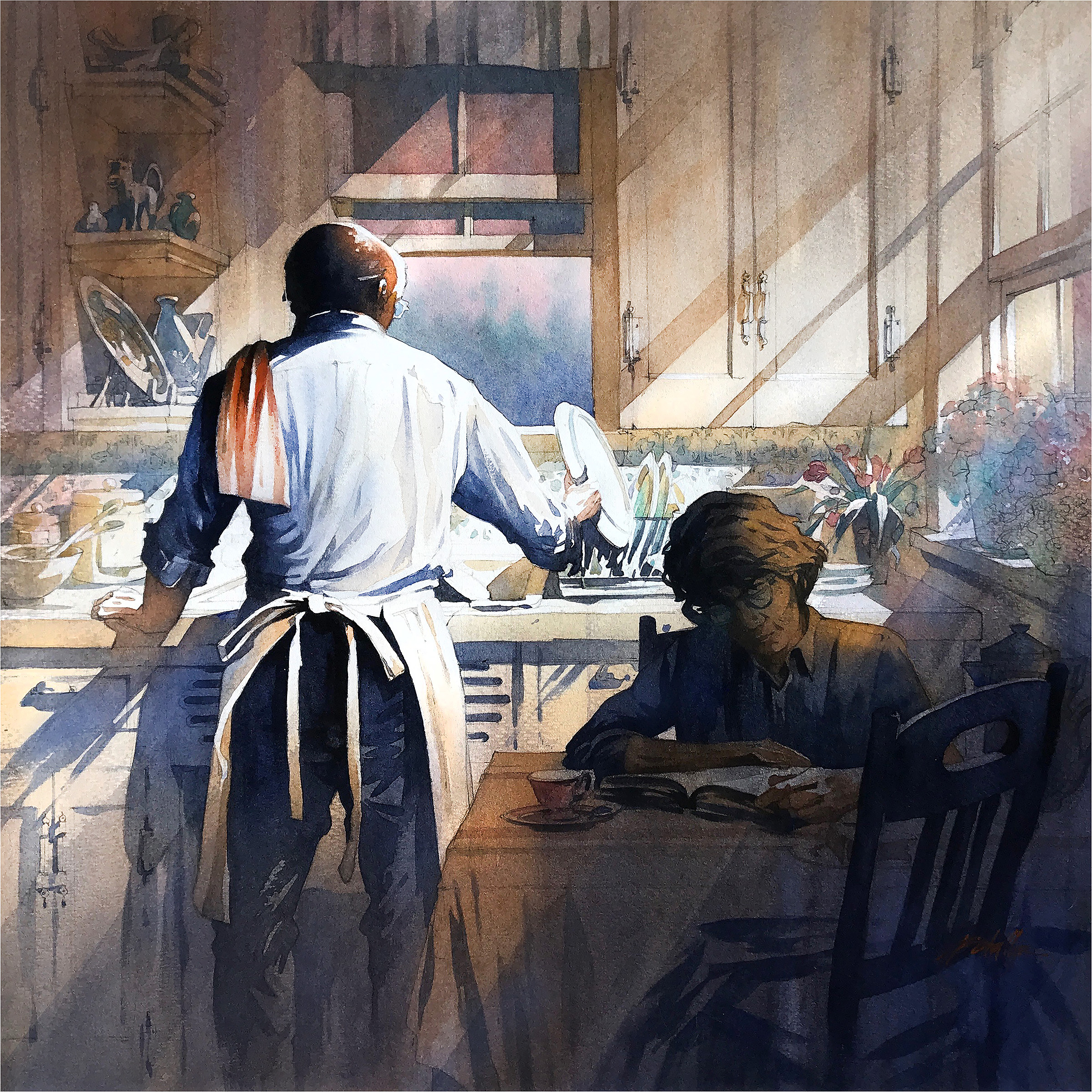
“I don’t regret my architectural training, but I sometimes resent it. I mean, it was driven into my head that the more detail the better. As a painter, that whole idea is just turned on its head. I look back at some of my paintings, and think, oh God, if only I’d used 10 or 20 percent fewer brush marks or three or four fewer colors, it would have been a much better painting. So that’s the path I’m on.
“Even if I’m painting something that’s fairly realistic or recognizable, I’m cognizant that the more lines or details I put in, the more I might dilute the original idea or its impact. It requires a delicate balance, and I actually love walking the line of seeing how little I can get away with, how few details I can put in to an otherwise fairly realistic-looking scene.
“I’ve had many great teachers, but Joseph Zbukvic was one of my first, and he said it’s better to imply than to state some of the time. So if you just imply detail, rather than expressing it all completely, you end up with a much more poetic, a much more expressive, much more inclusive painting. And I still look at his paintings and I’m shocked at how much how much he seems to imply just with a simple shape of color.”

